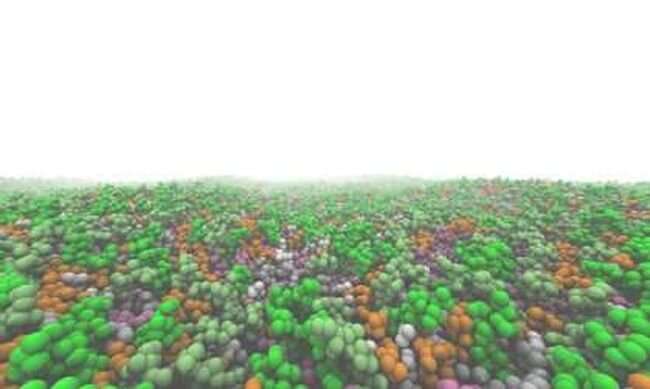This article has been reviewed according to Science X's editorial process and policies. Editors have highlighted the following attributes while ensuring the content's credibility:
fact-checked
peer-reviewed publication
trusted source
proofread
New study into tuberculosis membrane molecules could aid drug delivery

A new method to aid in the development of antibiotics for tuberculosis (TB) infections has been devised.
TB rivals COVID-19 as the biggest infectious disease killer of humans, claiming millions of lives each year. Now, ground-breaking research from the Universities of Warwick and Toulouse has identified a new method to help tackle this global issue.
TB is caused by the pathogen Mycobacterium tuberculosis (Mtb). This bacterium has a particularly complex cell envelope, which acts as a physical barrier to antibiotics, making it extremely difficult to treat. The membrane is mainly composed of glycolipid phosphatidyl-myoinositol mannosides (PIMs), but little is known about these lipids and their role remains elusive.
Using their computer model, the researchers showed how a specific antibiotic, Bedaquiline, interacted with its target on a molecular level. This reveals a level of detail that previously could not be observed and could be critical in developing new and improved anti-tubercular drugs to treat the 10 million new infections that occur each year. The work is published in the journal Proceedings of the National Academy of Sciences.
Chelsea Brown, Ph.D. student at the University of Warwick said, "In our study, we modeled the innermost part of this cell envelope, simulating PIMs for the very first time. This enabled us to see how antibiotics pass through the membrane and interact with the membrane. We could see how known antibiotics interact with their targets which match with previous experimental results. This gives us confidence that our model can be used to help identify new antibiotics.
"As there are many drug targets within the bacteria cells themselves, our study will further knowledge into how pharmaceuticals can cross membranes and exert their influence. This will further improve drug efficacy. Furthermore, it will also help scientists on the quest to understand why TB becomes resistant to antibiotics—a grave issue in modern medicine." The study is one of the first to emerge from the University of Warwick's Sir Howard Dalton Center, a network of academics investigating novel drugs that target resistant microbes, which launched in October 2022.
Professor Phillip Stansfeld, co-director of the Sir Howard Dalton Center, added, "There is still a desperate need to improve research into TB, but this area is very challenging in part due to how little we understand about the barriers, specifically the cell envelopes, preventing drugs entering the bacteria.
"Deciphering the molecular organization of cellular membranes remains a fundamental challenge for researchers in the area, but our study brings us one step closer to understanding this problem. Going forward, we hope to understand more about mutations in bacterial genes that lead to antibiotic resistance."
Researcher Matthieu Chavent, University of Toulouse, added, "It's very exciting to see how the field of molecular dynamics simulations has evolved these last few years. It is now possible to design very complex and accurate models of biologically relevant membranes. Our work is a very good example of this evolution. Going forward, we're keen to model the whole mycobacterial envelope."
More information: Chelsea M. Brown et al, Supramolecular organization and dynamics of mannosylated phosphatidylinositol lipids in the mycobacterial plasma membrane, Proceedings of the National Academy of Sciences (2023). DOI: 10.1073/pnas.2212755120
Journal information: Proceedings of the National Academy of Sciences
Provided by University of Warwick

















